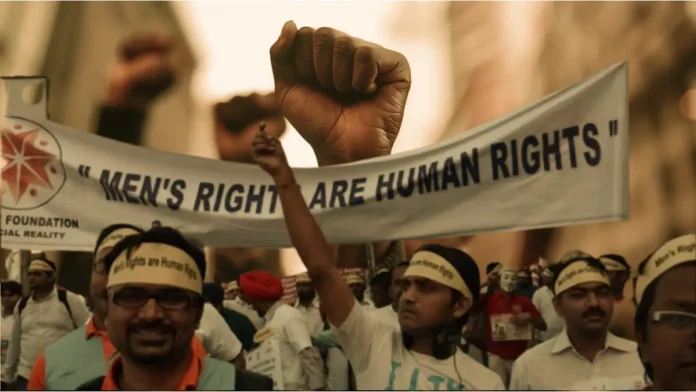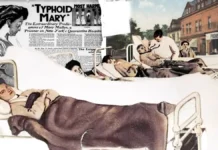In a country where a man is falsely accused of dowry harassment every 12 minutes, and over 80,000 men are imprisoned every year under Section 498A of the Indian Penal Code1, the narrative of gender equality takes a strikingly one-sided turn. The story of Arnesh Kumar, a software engineer from Bihar, is a chilling reminder of this reality2. Accused of dowry harassment by his estranged wife, Arnesh spent some years in prison, only to be acquitted later due to lack of evidence3. His ordeal is a testament to the urgent need to explore the other side of the coin – the men’s rights movement in India.
Contents
History of Men’s Rights Movement in India
The men’s rights movement in India has its roots in the early 2000s when a handful of individuals and organizations began to raise awareness about the issues faced by men. One of the pioneering organizations was the Save Indian Family Foundation (SIFF), founded in 2005 by a group of men who had experienced firsthand the misuse of gender-biased laws.
Since then, the movement has grown steadily, with several organizations and groups emerging across the country. Some notable events and campaigns that have marked the movement’s trajectory include:
- The “Save the Husband” campaign was launched by SIFF in 2007, which aimed to raise awareness about the misuse of Section 498A of the Indian Penal Code.
- The formation of the All India Men’s Welfare Association (AIMWA) in 2010, has been instrumental in advocating for men’s rights in the realm of family law.
- The “Men’s Rights Conference” held in 2017, brought together activists, lawyers, and experts to discuss the various challenges faced by men4.
Today, the men’s rights movement in India is at a critical juncture. With the rise of social media, the movement has gained significant traction, and several mainstream political parties have begun to take notice. However, the movement still faces significant challenges, including resistance from feminist groups and a lack of clear policy initiatives from the government.
Unfair Laws and Biased Systems
India’s legal system is founded on the principle of “innocent until proven guilty,” but in reality, when men are subjected to legal discrimination with non-bailable warrants, law enforcement harassment, the burden of proof, etc makes them think that they are “guilty until proven innocent”. This clear contrast is particularly evident in laws and policies that deal with gender-based issues. When looking closely, we can see a web of legislation that disproportionately affects men, throwing them into a cycle of harassment, psychological bullying, and legal extortion which sucks up their energy and desire to be a productive citizen for their families, society, and the nation.
Below is the list of some unjust laws that had contributed mainly to making men the target of Legal Extortion:
- Section 498A of the Indian Penal Code: It is a law intended to protect women from dowry harassment but is often misused to falsely implicate men. Some sources say that nearly 30% of all section 498A cases are false.5
- The Domestic Violence Act: Another legislation that ignores the plight of male victims of domestic violence. Although created as a means to save people from Domestic Violence, this section can’t be used by any man to save himself from DOmestic violence which is becoming a huge problem nowadays6.
- Section 69 of Bhartiya Nyay Sanhita: A provision that raises concerns about its potential misuse against men. Here too the burden of proof lies on Men to prove himself innocent in case of forswearing7.
- Other laws and policies that perpetuate discrimination against men, including those related to child custody, maintenance, and sexual harassment.
These facts are enough to sense a problem in Indian Society, especially in the judiciary that results in high bias and injustice against men.
Solutions and Recommendations
As we have explored the challenges faced by men in India, it is clear that we need to reform multiple areas to address this issue. Merely highlighting the problems is not enough; we must work towards creating a more just and equitable society for all. Some reforms that we can suggest are the following
Legal Reforms:
Amendments to existing laws and policies are crucial to address the gender bias and discrimination faced by men in India. Some suggested reforms include:
- Section 498A of the Indian Penal Code: Amend the law to make it gender-neutral and introduce safeguards to prevent misuse, such as requiring proof of intent to harass or harm.
- Prenup Agreements: Give legal recognition to prenup agreements in India, and we will go as far as to say that these should be made mandatory for marriages in India.
- Domestic Violence Act: Revise the law to recognize men as victims of domestic violence and provide them with equal protection and support.
- Child Custody Laws: Reform laws to prioritize joint custody and shared parenting, ensuring both parents have equal rights and responsibilities.
- Maintenance Laws: Amend laws to make maintenance payments fair and reasonable, considering the income and financial situation of both parties.
Social Awareness:
Promoting true gender equality and challenging stereotypes requires a sustained social awareness campaign:
- Education: Integrate gender studies and sensitization programs in school curricula to encourage empathy and understanding.
- Media: Encourage media representation of men’s issues and promote gender-balanced storytelling.
- Community Engagement: Organize workshops, seminars, and support groups to raise awareness and provide a platform for men to share their experiences.
- Normalize Prenups in Indian Society.
Support Systems:
Establishing support systems for men is vital to addressing their mental health, emotional well-being, and social needs:
- Counseling Services: Provide accessible and affordable counseling services for men, focusing on issues like depression, anxiety, and relationships.
- Support Groups: Create support groups for men affected by domestic violence, false accusations, and other gender-related issues.
- Helplines: Establish dedicated helplines for men in distress, offering confidential advice and support.
Conclusion
As we conclude our exploration of the men’s rights movement in India, it’s essential to recap the key points that have emerged from our discussion. We’ve seen how men in India face unique challenges and biases in various aspects of life, from laws and policies to social norms and expectations. We’ve also examined the efforts of the men’s rights movement to address these issues and promote gender equality.
Now, it’s time to take action. If you’ve been moved by the stories and issues in this article, we encourage you to engage with the men’s rights movement in India. Attend events, join online forums, and support organizations working towards gender equality.
In the end, acknowledging and addressing men’s rights in India is crucial for building a society that values and respects the dignity of all individuals, regardless of gender. By working together, we can create a more just and equitable world for everyone.














